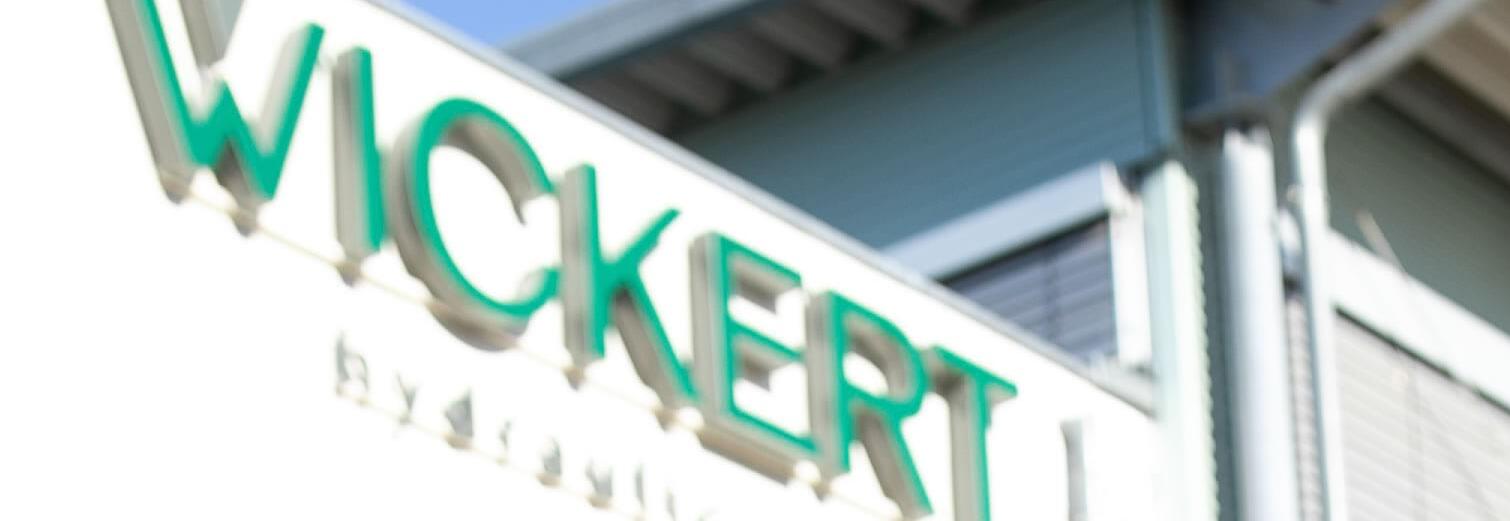The highly resilient (carbon) fiber composite component is manufactured at Eurocopter in Donauwörth by the Resin Transfer Molding (RTM) process. This process allows the production of structural components with relatively high volumetric fiber content and good impact qualities, while ensuring low weight at the same time.
The case considered involves the application of the injection process with the use of the WICKERT WKP 2500 S composite press. The WKP 2500 S composite press is based on the proven modular system of the WICKERT downstroke presses. Since exposure of the carbon parts to even the slightest hint of oil mist has to be rigorously excluded, the complete absence of oil leakage by the hydraulic press system was an essential requirement. This was achieved by the complete enclosure of the press area, as well as all the press technology peripherals including hydraulic plant and electrical systems. The press, with a closing pressure of 2.500 kN, has an upper and lower form installed for each job. The mounting plates measure 2.400 x 1.800 mm. The controller and process visualization integrates the injector, the heating/cooling system and the press shuttle. The latter performs the fully automatic loading of the raw work piece brought from the high-bay warehouse, as well as the return transport after the process. The cycle time per aircraft door is about 6 h.
WICKERT built a press cell for L-shapes especially for the aircraft components industry. These Lshapes serve as reinforcements for the Airbus A 350 XWB fuselage. While the aircraft doors are manufactured from highly resilient (carbon) fiber composite components in the Resin Transfer Molding (RTM) process, the L-shapes are produced with the thermoforming process. With its working area of 660 x 370 mm and a press force of 600 kN, the column upstroke press for the L-shapes is significantly smaller than the “aircraft door press”. On the WKP 600 S, L-shapes are formed from various matrix materials such as PPS or PEEK with carbon fibers. In order to be able to process the PEEK material, the machine is equipped with an infrared preheating oven, which heats the carbon laminate to a precisely regulated temperature of up to 425 °C to cool in the press to 250 °C. The required temperature accuracy in the infrared preheating oven is + 5 °C at 425 °C.
The reinforcement angle follows the cylindrical geometry of the fuselage, which is why there are only a few identical components per aircraft. In total about 4,500 of these reinforcements are built into each Airbus A 350. This means that more, and in particular faster tooling changes have to take place. Simultaneously with the pressing process, two form preheating ovens bring two tool pairs up to the processing temperature of 300 °C. The transfer of the heated material up to the closing of the press and the buildup of pressure takes less than 5 seconds.
The very comprehensive data recording program necessary for application in the aerospace industry presented a challenging hurdle in the overall concept. Every part demands detailed documentation of the production process including the traceability of all processing steps. Consequently, each L-shape is labeled directly on the press after production, for example. A barcode printer produces a label which is adhered to the particular component and which makes the part-specific process data permanently available directly on the component.
